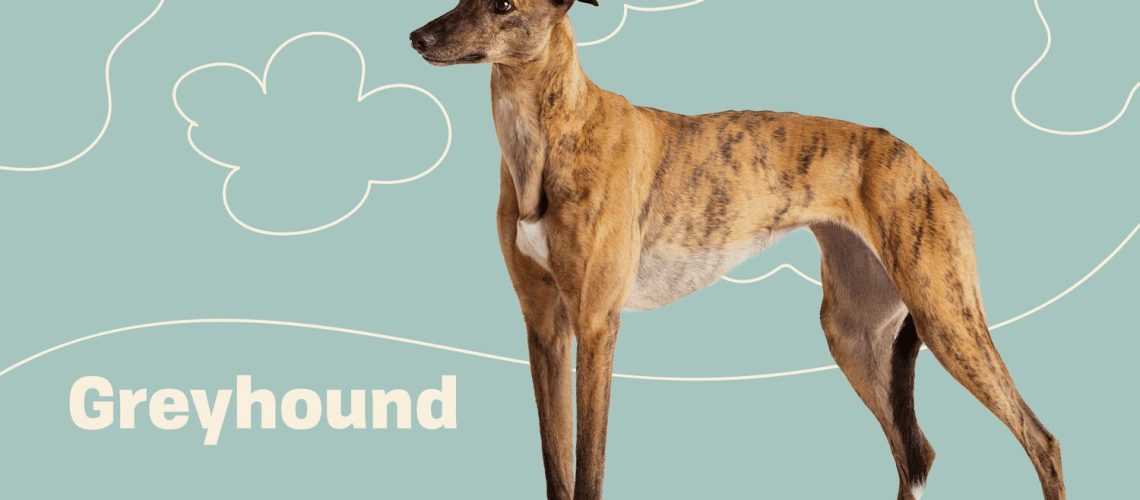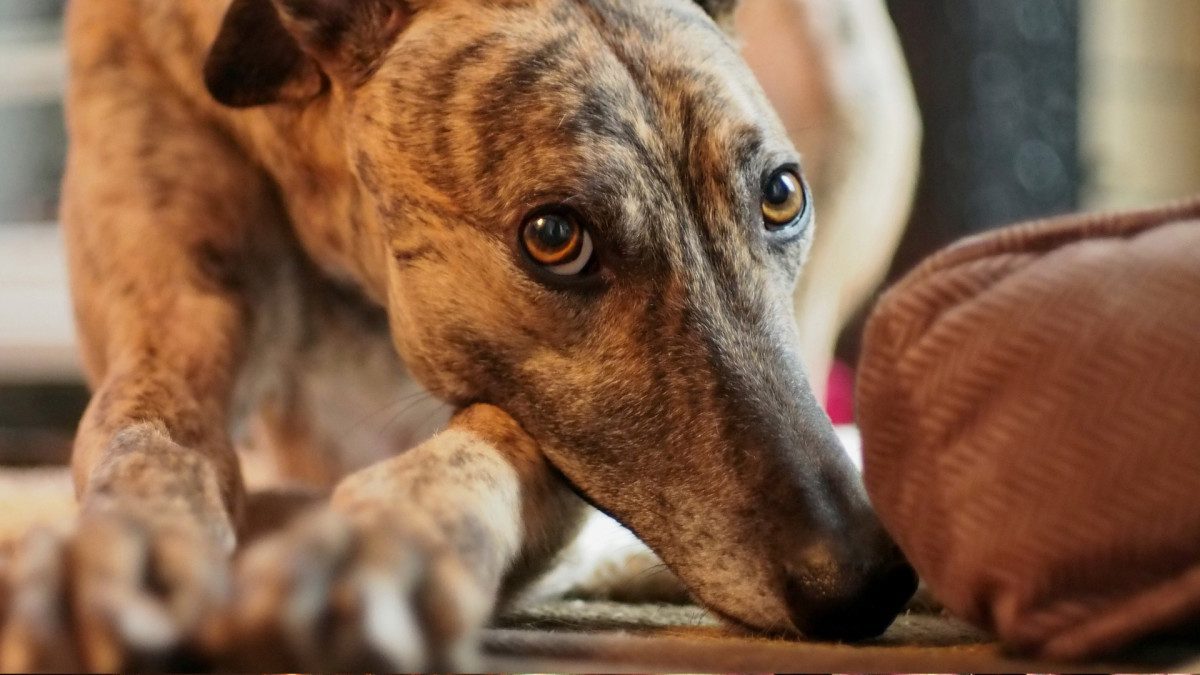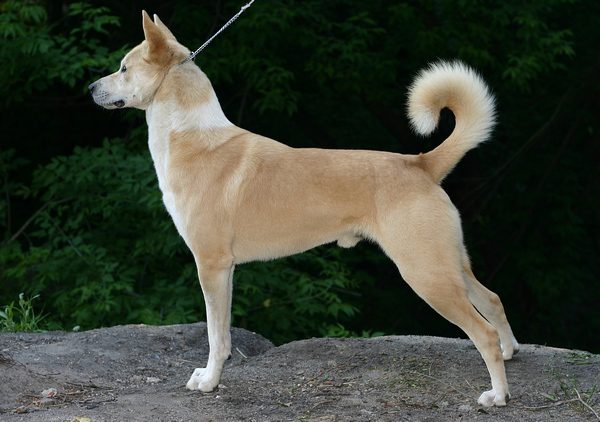Key Takeaways:
- Greyhounds are a gentle and affectionate breed known for their speed and athleticism.
- They have a short coat that requires minimal grooming, but they can be sensitive to extreme temperatures.
- Greyhounds are typically quiet and well-behaved indoors, making them suitable for apartment living.
- Regular exercise is essential for Greyhounds to prevent boredom and maintain their physical health.
- Proper socialization from an early age is crucial to help Greyhounds interact well with other animals and people.
Are you curious about Greyhounds? These elegant and swift dogs have captured the hearts of many dog lovers around the world. Whether you are considering getting a Greyhound as a pet or simply want to learn more about this unique breed, delving into the characteristics and care of Greyhounds can bring immense value to your life. Understanding these fascinating dogs will not only help you provide them with the best care possible but also give you insights into their behavior and needs. So, if you're ready to embark on an exciting journey into the world of Greyhounds, let's dive in and uncover what makes them so special!
What is a Greyhound and what makes it unique?
A Greyhound is a breed of dog that is known for its speed and grace. They are one of the oldest dog breeds and have been used for hunting and racing for centuries. What sets them apart from other dogs is their sleek and slender body, built for running at high speeds. They have long legs, a deep chest, and a narrow waist, which allows them to reach incredible speeds in short bursts.
Greyhounds are also known for their gentle nature and calm demeanor. Despite being bred for hunting, they are surprisingly gentle with people and make great companions. They are often referred to as "45-mile-per-hour couch potatoes" because they love to run but also enjoy lounging around the house.
Greyhound Racing
One of the most unique aspects of Greyhounds is their history in racing. They have been bred specifically for their speed and agility on the racetrack. In professional racing, Greyhounds can reach speeds of up to 45 miles per hour in just a few strides! Their slim build and powerful muscles make them perfect contenders in races.
Retirement Programs
Once retired from racing, many Greyhounds are adopted into loving homes through specialized adoption programs. These programs help find suitable families who can provide these retired athletes with a comfortable retirement. It's amazing to see these once high-speed racers transform into gentle pets who enjoy leisurely walks and cuddles on the couch.
Unique Physiology
- Their long legs allow them to take large strides while running, covering more ground with each step.
- Their deep chest allows for efficient oxygen intake during high-speed sprints.
- Their narrow waist helps in maintaining balance and stability while running at high speeds.
- They have a flexible spine that allows them to stretch their bodies while running, maximizing their stride length.
Physical characteristics of a Greyhound
Greyhounds have a unique set of physical characteristics that contribute to their incredible speed and agility. Their body is built for running, with long legs and a slender frame. They have a deep chest, which allows for efficient oxygen intake during intense sprints. This helps them maintain their speed for longer periods of time.
Their coat is short and smooth, which reduces drag when they are running at high speeds. This also makes grooming relatively easy as they do not require much brushing or trimming. Greyhounds come in various colors including black, white, fawn, brindle, and more.
Size and Weight
Greyhounds are considered large dogs but are surprisingly lightweight compared to other breeds of similar size. Adult males typically weigh between 65-85 pounds (29-39 kg), while females weigh slightly less at around 60-70 pounds (27-32 kg). Despite their size, they have a slim build and appear elegant and graceful.
Height
Greyhounds are known for their tall stature. On average, males stand between 26-30 inches (66-76 cm) tall at the shoulder, while females measure slightly smaller at 24-28 inches (61-71 cm).
Eyesight
One of the most remarkable features of Greyhounds is their exceptional eyesight. They have keen vision and can spot small movements from great distances. This attribute has been honed through centuries of hunting and racing.
Personality traits of Greyhounds
Greyhounds have a unique and gentle personality that sets them apart from many other dog breeds. They are known for their calm and laid-back nature, making them great companions for families and individuals alike.
Despite their history as hunting dogs, Greyhounds are surprisingly docile and non-aggressive. They are generally friendly towards people and other animals, including other dogs. This makes them a good choice for households with multiple pets.
Gentle Temperament
Their gentle temperament makes them well-suited to be therapy dogs. They have a calming presence and can provide comfort to those in need, such as patients in hospitals or individuals with special needs.
Loving Companionship
Greyhounds form strong bonds with their owners and thrive on human companionship. They enjoy being part of the family and are known to be affectionate towards their loved ones. However, they may initially be reserved around strangers but warm up once they feel comfortable.
Sensitive Nature
Greyhounds are sensitive creatures who can be easily affected by harsh treatment or loud environments. It's important to provide them with a calm and peaceful living environment to keep them happy and stress-free.
How much exercise does a Greyhound need?
Understanding the energy levels of Greyhounds
Greyhounds are known for their incredible speed and agility, but contrary to popular belief, they are not hyperactive dogs. In fact, Greyhounds are often referred to as "couch potatoes" because they enjoy lounging around and sleeping for most of the day. However, this doesn't mean that they don't need exercise. While they may not require intense physical activity like some other breeds, regular exercise is still essential for their overall well-being.
The ideal exercise routine for a Greyhound
To keep your Greyhound happy and healthy, aim for at least two short walks or play sessions each day. These walks should be around 20-30 minutes long, allowing your Greyhound to stretch their legs and explore their surroundings. Additionally, providing them with mental stimulation through puzzle toys or interactive games can also help fulfill their exercise needs.
Tips for exercising your Greyhound
1. Find a safe and secure area: Due to their incredible speed, it's crucial to ensure that you exercise your Greyhound in a securely fenced area or on a leash.
2. Avoid extreme weather conditions: Greyhounds have thin coats and minimal body fat, making them sensitive to extreme temperatures. During hot weather, opt for early morning or late evening walks when it's cooler.
3. Consider off-leash activities: If you have access to a secure dog park or enclosed area where your Greyhound can safely run off-leash, take advantage of it! This will allow them to fully stretch their legs and enjoy some freedom.
Remember that every dog is unique, so it's important to observe your Greyhound's behavior and adjust their exercise routine accordingly. Regular exercise not only helps maintain their physical health but also contributes to their mental well-being.
Diet tips for keeping Greyhounds healthy
Understanding the nutritional needs of Greyhounds
Proper nutrition plays a crucial role in maintaining the health and well-being of Greyhounds. These dogs have specific dietary requirements that differ from other breeds, primarily due to their lean body structure and high metabolism. To ensure your Greyhound stays healthy, it's essential to provide them with a balanced diet that meets their unique nutritional needs.
The ideal diet for a Greyhound
A high-quality commercial dog food formulated specifically for large or athletic breeds is generally recommended for Greyhounds. Look for a brand that lists meat as the primary ingredient and avoids fillers or artificial additives. Additionally, consider feeding your Greyhound smaller, more frequent meals throughout the day rather than one large meal to prevent bloating, which can be a common issue in deep-chested breeds like Greyhounds.
Tips for feeding your Greyhound
1. Consult with a veterinarian: It's always best to consult with a veterinarian who can provide personalized dietary recommendations based on your Greyhound's age, weight, activity level, and any specific health concerns.
2. Monitor portion sizes: While it's important to feed your Greyhound enough to meet their energy requirements, be mindful of portion sizes to prevent overfeeding and obesity.
3. Provide fresh water at all times: Make sure your Greyhound has access to clean and fresh water throughout the day to stay hydrated.
By following these diet tips and providing your Greyhound with proper nutrition, you can help them maintain a healthy weight, strong muscles, and overall vitality.
Grooming needs for Greyhounds
Understanding the low-maintenance grooming of Greyhounds
One of the advantages of owning a Greyhound is their low-maintenance grooming needs. Their short, sleek coats require minimal attention compared to other breeds. However, there are still some essential grooming practices that should be followed to keep your Greyhound looking and feeling their best.
Grooming routine for a Greyhound
Regular brushing is key to keeping your Greyhound's coat in good condition. Use a soft-bristle brush or a rubber grooming mitt to remove loose hair and distribute natural oils throughout their coat. This will help prevent matting and keep their skin healthy.
Tips for grooming your Greyhound
1. Bathing: Greyhounds generally have clean coats that don't require frequent bathing. Aim for bathing them every 2-3 months or as needed, using a mild dog shampoo.
2. Nail trimming: Regularly check and trim your Greyhound's nails to prevent overgrowth, which can cause discomfort and difficulty walking.
3. Dental care: Like all dogs, Greyhounds need regular dental care to maintain good oral hygiene. Brush their teeth regularly with a dog-specific toothbrush and toothpaste.
It's important to note that despite their low-maintenance coats, Greyhounds are prone to skin sensitivities, so it's crucial to use gentle products and monitor any changes in their skin condition. By following these grooming tips, you can ensure that your Greyhound remains clean, comfortable, and healthy.
Tips for training and socializing a Greyhound
The importance of early training and socialization
Training and socialization are vital aspects of raising a well-behaved and happy Greyhound. Starting early with positive reinforcement-based training techniques will help shape their behavior and build a strong bond between you and your furry companion.
Training tips for a well-behaved Greyhound
Consistency is key when training a Greyhound. Use positive reinforcement methods such as treats, praise, and rewards to motivate and encourage desired behaviors. Greyhounds are intelligent dogs, but they can also be independent, so patience and persistence are essential.
Tips for training and socializing your Greyhound
1. Start with basic commands: Begin training your Greyhound with basic commands like sit, stay, come, and leash manners. Gradually progress to more advanced commands as they master the basics.
2. Socialization: Expose your Greyhound to various environments, people, and other animals from an early age. This will help them become well-adjusted and confident in different situations.
3. Mental stimulation: Greyhounds have a keen intellect and need mental stimulation to prevent boredom. Incorporate puzzle toys, interactive games, or obedience classes into their routine to keep their minds engaged.
Remember that training should always be done in a positive and gentle manner. Harsh or punitive methods can cause fear or anxiety in Greyhounds, leading to behavioral issues. With consistent training efforts and socialization experiences, you can raise a well-rounded Greyhound who is a joy to be around.
These comprehensive tips on exercise, diet, grooming, training, and socialization will help you provide the best care for your Greyhound companion. Remember to tailor these guidelines based on your individual dog's needs and consult with professionals whenever necessary for personalized advice.
In conclusion, greyhounds are gentle and fast dogs that require regular exercise and a balanced diet. They make great pets for families who can provide them with love, care, and plenty of space to run.
Are greyhound dogs high maintenance?
Greyhounds are a great choice for many people and families due to their calm and easygoing nature, as well as their low maintenance requirements. Despite being a larger breed, Greyhounds are known for their gentle and well-mannered behavior, in addition to their speed.
What are the character traits of a greyhound?
Greyhounds have a gentle and non-threatening nature, but their sensitivity means they are better suited to calm and peaceful environments. They are more independent compared to other breeds and are content being left alone at times.
Is a greyhound a good house dog?
Greyhounds are great for keeping as pets because they are intelligent, affectionate, and well-mannered with both kids and adults. Additionally, Greyhounds tend to be curious and easygoing in nature.
What are the weaknesses of a greyhound?
What are the disadvantages of owning a Greyhound? The Greyhound breed is prone to conditions like bloat and gastric dilatation and volvulus, which can be a cause for concern for pet owners. Additionally, Greyhounds have a strong instinct to chase prey, so they may not be suitable for households with cats or other small animals.
Are greyhounds high anxiety?
The root causes of problematic behaviors in greyhounds often stem from fear, anxiety, and the unfamiliarity of their surroundings. These issues are likely influenced by genetics to some extent but primarily result from a lack of early and suitable socialization within a domestic environment.
Do greyhounds get aggressive?
As a result, many people mistakenly believe that greyhounds are aggressive, when in reality, most greyhounds are gentle. In the 1920s, mandatory muzzling was implemented to prevent greyhounds from getting injured while racing.

















